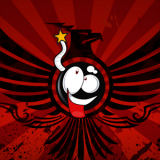Putting The 'Play' Back Into Playing Games
By danielkempster 2 Comments
Hey there folks, and welcome to my first blog post of 2018 - a belated 'Happy New Year' to one and all is in order, I guess. I had planned to put something out there a lot sooner than this. I'd been thinking about jotting down a list of priorities for 2018, both gaming and otherwise, but the moment has probably passed for such a blog to be relevant at this point. I'd also intended to resume my 'An Hour With...' series by now, but I've not yet had a chance to approach any games facing the chop. Hopefully the delay has been worth it though, because I've been fortunate enough to find a common thread in the games I've been playing that I feel is worth writing about. And as I'll soon be getting to, the word 'play' is key to that thread...
I think we all say that we 'play' video games, right? 'Play' is the verb of choice when it comes to describing this hobby that unites us all, probably because it connotes one of the core tenets that defines the medium - interactivity. We act upon our in-game avatars in the same way that children manipulate their action figures and LEGO bricks. It also connotes fun, which in most cases is the default emotional output of the games we play. But that's not all that 'play' entails, is it? 'Play' is just as much about imagination and discovery as it is about interactivity and fun. And while so many games nail the latter points, the former ones seem to be less and less prevalent in modern video game design. Experimentation and exploration are neutered by modern design choices in a lot of current-generation games, from excessive tutorialisation to world maps full of waypoints. I'm not saying that somehow makes these games less fun, just that it makes them feel less like 'play' in the truest sense of the word. Through January I've been fortunate enough to spend time with two games - one old, one new - that have gone a long way towards reinstating my sense of 'play' when it comes to video games.
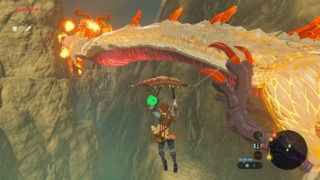
Probably the biggest gaming development in my life so far this year has been my acquisition of a Nintendo Switch back at the beginning of January. I'd been saving up to buy one since last summer, and thanks to my family's generosity at Christmas I was able to pick up a one-game bundle online. Given the choice between Nintendo's flagship franchises, I opted for The Legend of Zelda: Breath of the Wild over Super Mario Odyssey. Over the last five weeks I've spent almost ninety hours travelling across the latest iteration of the kingdom of Hyrule. In that time I've reclaimed all four of the Divine Beasts from Calamity Ganon and cleared around eighty-five Shrines. I've also ridden a moose bareback across the northern snowfields, broken every single melee weapon in my inventory trying (and failing) to subdue a Lynel, tied enough Octo Balloons to a raft to make it fly, set fire to a field just to watch it burn, and climbed the tallest mountain in the world simply to see what was on the other side.
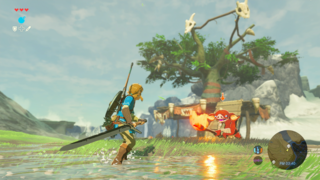
The fact I'm able to describe Breath of the Wild in these terms, terms beyond my progression statistics, is a clear indication of the ethos behind its design - empowering the player to be creative in their approach to any given situation. This version of Hyrule is built on a multitude of systems that stack upon and interact with each other in fascinating ways, all of which are left for the player to discover on their own terms. Its map isn't filled with the typical 'icon barf' that has come to define the open-world genre through series like Assassin's Creed and Far Cry. Instead, Breath of the Wild puts its map-marking tools in the hands of the player, encouraging them to set their own destinations rather than telling them stubbornly where to go and what to do when they get there. The Divine Beasts, the game's answer to the Zelda series' more traditional multi-room multi-puzzle dungeons, are liberatingly free-form compared to the old tried-and-tested formula of 'solve puzzle, get item, use on boss'. Thanks to the dual nature of the Switch I can play either at home or on the go, for five hours or for five minutes, and every play session, now matter where, no matter how long, is unique and rewarding.
I could go on for paragraphs and paragraphs about Breath of the Wild, but to do so would be to repeat what others have already said ten times over in much better prose than I can muster right now. Besides, if I fill this blog with Zelda talk, I'll have no space to say anything about the other game I've been playing, will I? Alongside breaking in my new Switch, I've been getting to grips with Banjo-Tooie - specifically the Xbox Live Arcade version, included as part of the fantastic Rare Replay collection for Xbox One. I've played through the original Banjo-Kazooie twice in recent years, and I hold up Nuts & Bolts as one of my favourite games of the last generation, but I'd never touched the game that sits between them until a couple of weeks ago. Having finally beaten Gruntilda this morning, now seems like a good time to get some thoughts down on the bear and bird's second outing, and how it too has revived my passion for 'play' in video games.
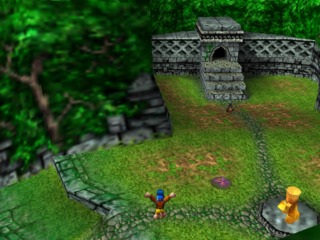
One of the first things I noticed about Banjo-Tooie (when it eventually let me play, after a very protracted opening by platformer standards) is how much bigger it is than the game that preceded it. I've read that Tooie is around three times bigger than Kazooie, and based on what I've seen (and how long it's taken me to see it), I can believe it. The Isle O' Hags is so much more open and expansive than Gruntilda's Lair, and filled with so much more stuff to do, that I'm slightly reluctant to call it a hub world. While each world has its own theme and unique feel, there's a mind-boggling level of inter-connectivity between them all, with multiple paths linking the worlds together, and even a train that can travel between several of them. It gives Tooie a much larger sense of scale and a much better sense of place - you really feel like all these environments co-exist, instead of being their own distinct zones.

This design choice may not be to everyone's tastes, but I absolutely loved it, and not just because there's more space to explore. Tooie extends this inter-connectivity to the act of collecting its Jiggies, locking many of them behind multi-stage puzzles and challenges spread across multiple worlds. The shaman Mumbo Jumbo is playable in Tooie, while Humba Wumba takes on his old role by providing the buddy duo with a host of new magical transformations to play around with. It's even possible for Banjo and Kazooie to go their separate ways, with each protagonist having a unique arsenal of moves enabling them to reach certain areas and solve certain problems that they can't when together. All of these aspects combine to create a platforming adventure that's filled with exploration and experimentation, rewarding the player for approaching problems from multiple angles and in multiple ways. It was incredibly rewarding to see each world gradually open up (and bequeath more of their Jiggies) as more abilities became available to me, making Banjo-Tooie one of the most purely fun times I've had with a platformer in recent memory. I'll definitely be going back to try for the Jiggies that I missed on my journey in the near future.
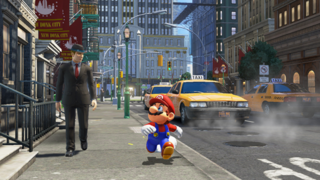
As I said earlier, this isn't some attempt to make games that don't emphasise 'play' seem less legitimate, and I will continue to have a lot of fun with games that prioritise story or challenge over 'play' in the future. But after powering through some very linear, guided and familiar experiences in the second half of 2017 (including getting all three Platinums in the Crash Bandicoot N. Sane Trilogy, retreading old ground in Pokémon Ultra Sun, and playing the first three Uncharted games almost back-to-back), it's been refreshing to start 2018 with some games that go completely the other way and encourage the player to go off and do their own thing. To that end, once I've wrapped up Breath of the Wild, I'm intending to pick up Super Mario Odyssey to keep my Switch active - and boy, does that ever look like a game that embodies every sense of the word 'play'. Until next time, thanks very much for reading folks. Hopefully writing this blog will be the kick-start that I need to get back to writing regularly again this year. Take care and I'll see you around.
Daniel
---
Currently playing - The Legend of Zelda: Breath of the Wild (NSW)
